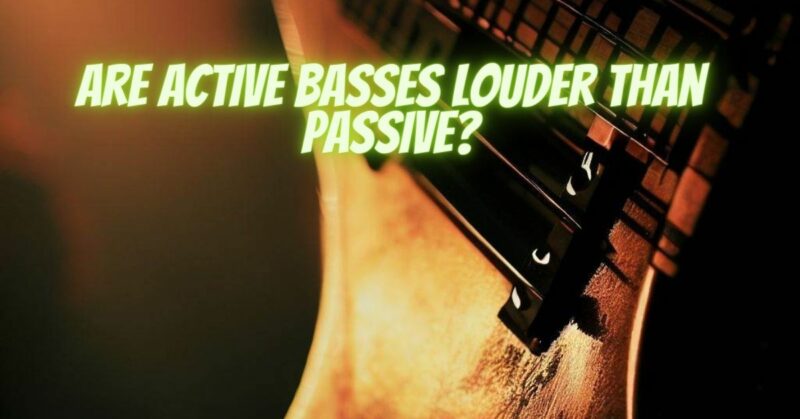The world of bass guitars is rich with sonic possibilities, and the question of whether active basses are louder than passive ones often arises. The volume of a bass guitar is influenced by various factors, including its electronics and design. In this article, we’ll explore the nuances of volume in active and passive basses, helping you understand how these factors interact to shape the instrument’s sonic output.
1. The Volume Equation
When it comes to bass guitars, the perception of volume is influenced by multiple elements working in harmony:
- Pickups: The type and placement of pickups impact the signal strength and tonal character.
- Electronics: Both active and passive basses can have different electronics that influence the signal’s strength and tonal shaping.
- Strings and Playing Technique: The type of strings you use and your playing technique contribute to the volume and overall sound.
2. Active Basses and Volume
- Onboard Preamps: Active basses often feature onboard preamps that boost the signal before it reaches the amp. This boost in signal strength can contribute to the perception of increased volume compared to passive basses.
- Equalization: Active basses also offer EQ controls that allow you to shape the tone. Boosting certain frequencies can create the impression of greater volume, as those frequencies become more prominent in the mix.
- Strong Output: The active electronics in these basses contribute to a stronger overall output, which can make them sound louder when played alongside passive basses.
3. Passive Basses and Volume
- Direct Interaction: Passive basses rely on the direct interaction between the strings and pickups to produce sound. This can result in a slightly lower output compared to active basses.
- Classic Tone: While passive basses might not offer the same immediate signal boost as active ones, their natural, warm, and organic tones have their own allure that appeals to certain genres and playing styles.
4. Factors Beyond Electronics
- Pickup Placement: The position of the pickups on the bass guitar affects the strength of the signal they capture. Pickups closer to the bridge might produce a brighter, punchier tone with a perceived increase in volume.
- Playing Technique: Your playing technique greatly influences the perceived volume. Slapping, plucking, and fingerstyle techniques can all affect the intensity of the sound produced.
5. The Amp and Amplification
It’s important to note that the amp you use and how it interacts with your bass play a significant role in shaping the overall volume and sound. Different amps have different sensitivities and responses to various frequencies, which can impact the perceived volume.
The perception of volume in bass guitars is a complex interplay of factors, including the type of electronics, pickups, strings, playing technique, and amplification. While active basses often have onboard preamps that boost the signal and offer EQ controls for tonal shaping, passive basses rely on the direct interaction of pickups and strings. Ultimately, the perceived volume of a bass guitar is a combination of its inherent characteristics, your playing style, and the amplification you use. Whether you choose an active or passive bass, remember that both have their unique qualities and contributions to the world of bass playing, allowing you to explore a rich spectrum of tones and express yourself through your music.


